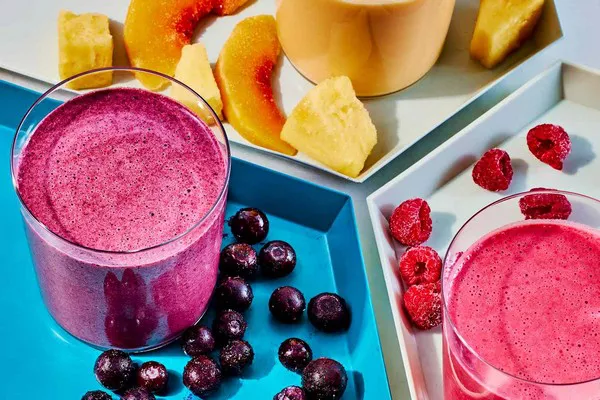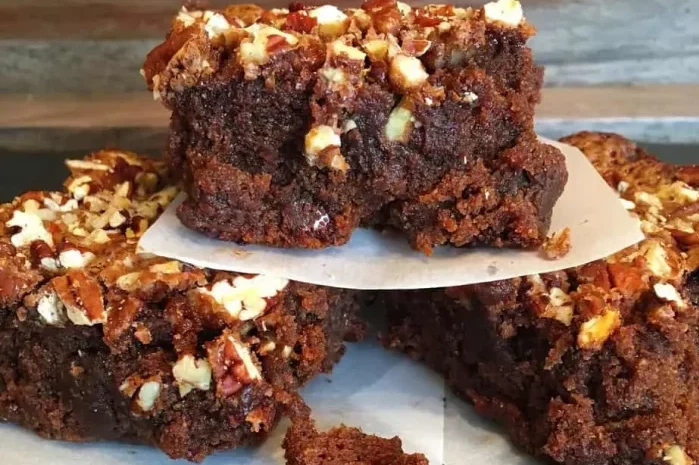In the world of health and wellness, fruit smoothies have established themselves as a quintessential choice for a nutritious and refreshing beverage. Packed with vitamins, minerals, and antioxidants, these blended concoctions offer a convenient and delicious way to boost your daily intake of fruits and vegetables. However, for those who are lactose intolerant, vegan, or simply looking to avoid dairy, the common addition of yogurt can present a challenge. Fortunately, crafting a delectable fruit smoothie without yogurt is not only feasible but also offers a diverse array of flavors and textures to explore. In this article, we delve into the art and science of making yogurt-free fruit smoothies, offering tips, recipes, and insights to help you create the perfect blend every time.
Understanding the Role of Yogurt in Smoothies
Yogurt has long been a popular ingredient in smoothie recipes, valued for its creamy texture, tangy flavor, and beneficial probiotics. However, its inclusion is not strictly necessary to achieve a satisfying smoothie experience. Yogurt primarily contributes creaminess and thickness to smoothies, along with a subtle tartness that complements the sweetness of the fruits. Fortunately, there are numerous alternatives that can replicate these qualities without the need for dairy.
Choosing the Right Base
The key to a velvety smoothie lies in selecting the appropriate base. While yogurt is a common choice, there are several alternatives that can serve as excellent substitutes:
1. Nut Milk: Almond milk, coconut milk, and cashew milk are popular options that impart a creamy texture to smoothies without overpowering the fruit flavors. Opt for unsweetened varieties to control the sugar content of your smoothie.
2. Oat Milk: Oat milk has gained popularity in recent years for its rich, creamy consistency and neutral taste. It blends well with fruits and adds a subtle sweetness to the smoothie.
3. Coconut Water: For a lighter, more hydrating base, coconut water is an excellent choice. It offers a delicate sweetness and pairs beautifully with tropical fruits such as pineapple, mango, and kiwi.
4. Fruit Juice: Freshly squeezed fruit juice, such as orange juice or apple juice, can serve as a flavorful liquid base for your smoothie. Keep in mind that fruit juices are naturally high in sugar, so use them sparingly or dilute them with water.
By choosing the right base for your smoothie, you can achieve the desired creaminess and texture without the need for yogurt.
Adding Creaminess and Thickness
In the absence of yogurt, there are several ingredients you can incorporate to lend creaminess and thickness to your smoothie:
1. Frozen Bananas: Frozen bananas are a staple in yogurt-free smoothies due to their natural creaminess and ability to thicken the texture when blended. Peel ripe bananas, slice them, and freeze them in advance for use in smoothies.
2. Avocado: Avocado is another excellent option for adding creaminess to smoothies. Its mild flavor pairs well with a variety of fruits, and its high fat content contributes to a smooth, luxurious texture.
3. Silken Tofu: Silken tofu is a versatile ingredient that can be blended into smoothies to add creaminess and a boost of protein. It has a neutral taste that won’t overpower the fruit flavors and can be particularly beneficial for those following a vegan or plant-based diet.
4. Greek Yogurt Alternative: If you’re avoiding dairy but still crave the tangy flavor of yogurt, consider using a non-dairy Greek yogurt alternative made from coconut milk or almond milk. These products are specifically formulated to mimic the taste and texture of traditional Greek yogurt while remaining dairy-free.
Experiment with these ingredients to find the perfect balance of creaminess and thickness for your yogurt-free smoothie.
Enhancing Flavor and Nutrition
One of the greatest appeals of fruit smoothies is their versatility, allowing you to customize the flavors and nutritional content to suit your preferences. Here are some tips for enhancing the flavor and nutrition of your yogurt-free smoothies:
1. Incorporate Leafy Greens: Sneak in an extra dose of vitamins and minerals by adding leafy greens such as spinach, kale, or Swiss chard to your smoothie. Their mild flavor pairs well with fruits and won’t overpower the other ingredients.
2. Boost with Superfoods: Superfoods like chia seeds, flaxseeds, hemp hearts, and spirulina can elevate the nutritional profile of your smoothie. These ingredients are rich in essential nutrients such as omega-3 fatty acids, fiber, and antioxidants.
3. Sweeten Naturally: Instead of relying on refined sugars or artificial sweeteners, use naturally sweet fruits like ripe bananas, berries, mangoes, or dates to sweeten your smoothie. Not only do they add sweetness, but they also provide a host of vitamins, minerals, and dietary fiber.
4. Add Flavorful Spices: Experiment with spices such as cinnamon, ginger, turmeric, or vanilla extract to add depth and complexity to your smoothie. These aromatic spices can enhance the overall flavor profile without adding extra calories or sugar.
By incorporating a variety of flavorful and nutrient-rich ingredients, you can create yogurt-free smoothies that are both delicious and nourishing.
Delicious Yogurt-Free Smoothie Recipes
To inspire your culinary creativity, here are three tantalizing yogurt-free smoothie recipes:
Tropical Paradise Smoothie:
1 cup coconut water
1/2 cup frozen pineapple chunks
1/2 cup frozen mango chunks
1/2 ripe banana
1/4 avocado
Handful of spinach leaves
1 tablespoon chia seeds
Optional: honey or agave syrup to taste
Blend all ingredients until smooth and creamy. Garnish with shredded coconut or a slice of fresh pineapple.
Berry Blast Smoothie:
1 cup almond milk
1/2 cup frozen mixed berries (strawberries, blueberries, raspberries)
1/2 ripe banana
1/4 cup silken tofu
Handful of baby spinach
1 tablespoon flaxseeds
Optional: a splash of lemon juice for extra freshness
Blend until smooth and pour into a glass. Top with additional berries or a sprig of mint.
Green Goddess Smoothie:
1 cup spinach or kale
1/2 cup unsweetened almond milk
1/2 ripe avocado
1/2 cup frozen mango chunks
1/2 cup frozen pineapple chunks
1 tablespoon hemp hearts
Optional: a squeeze of lime juice for brightness
Blend all ingredients until creamy and vibrant green. Serve immediately and enjoy the nourishing goodness.
Feel free to customize these recipes based on your preferences and dietary restrictions. With a bit of experimentation, you’ll discover endless possibilities for creating delicious yogurt-free smoothies that satisfy your cravings and fuel your body with wholesome ingredients.
Conclusion
In conclusion, making a fruit smoothie without yogurt opens up a world of possibilities for those seeking dairy-free alternatives or simply looking to shake up their usual routine. By understanding the role of yogurt in smoothies and exploring alternative ingredients, you can create creamy, flavorful blends that rival their yogurt-containing counterparts. Whether you prefer tropical flavors, berry-packed delights, or nutrient-rich green concoctions, there’s a yogurt-free smoothie recipe to suit every taste and dietary preference. So grab your blender, unleash your creativity, and embark on a delicious journey of smoothie-making mastery. Your taste buds—and your body—will thank you for it.

























